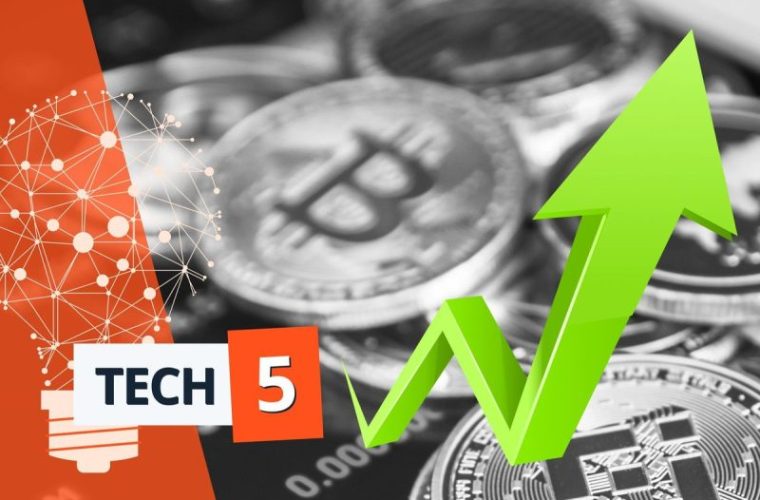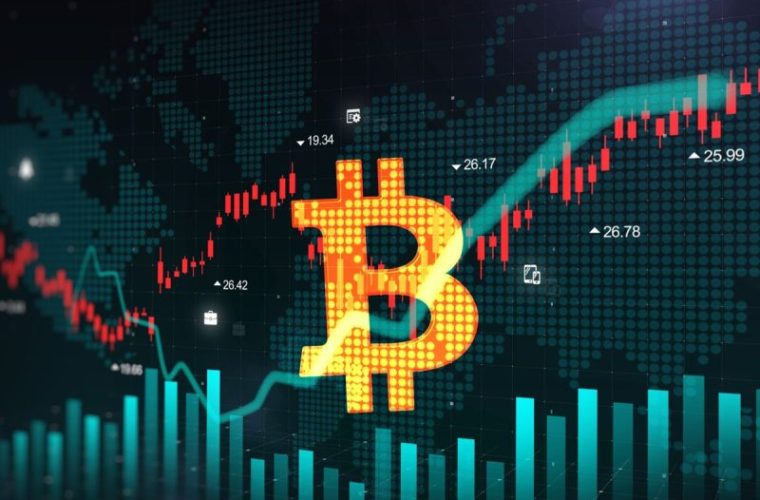
5 Top Weekly TSXV Stocks: Bravo Mining Gains 74 Percent on Drill Results

The S&P/TSX Venture Composite Index (INDEXTSI:JX) gained 3.71 points last week to close at 611.66.
Statistics Canada released Q1 gross domestic product (GDP) numbers this past Friday (May 31). In the report, the agency said real GDP rose 0.4 percent quarter-over-quarter, up from 0.2 percent in the fourth quarter of 2023. A contributing factor was higher household spending on services, but growth was moderated by slower inventory accumulations.
GDP for the mining, quarrying and oil and gas sector decreased by 0.5 percent in March, with a 3.9 percent decline in mining and quarrying, the biggest drop since January 2022. Gold and silver mining was the largest contributor to the fall with a drop of 6.7 percent. The declines were offset by a 0.4 percent uptick in oil and gas extraction.
South of the border, the US Bureau of Economic Analysis released April’s personal consumption expenditures (PCE) price index data on Friday. It was up 0.3 percent from March and rose 2.7 percent year-over-year. PCE is a key index for the Federal Reserve, and the steady numbers could add support for a September interest rate cut.
In mining news, the proposed US$49 billion merger between mining giants BHP (ASX:BHP,NYSE:BHP,LSE:BHP) and Anglo American (LSE:AAL,OTCQX:AAUKF) has been rejected by Anglo. The original proposal was made by BHP in April, but was brushed aside at the time when Anglo said the terms deeply undervalued the company.
The two had been negotiating up until this past Wednesday (May 29), but negotiations ultimately collapsed due to Anglo’s perceived risk and regulatory challenges surrounding the required spinout of its South African assets. Under UK rules, BHP will not be able to make another bid for six months, unless a competing bid is made for Anglo.
As for metals prices, copper declined 2.37 percent from the beginning of the week to reach US$10,016 per metric ton (MT), while gold declined 0.29 percent to finish the week at US$2,347.70 per ounce. Silver posted a slight gain, rising 0.08 percent to close the week at US$30.38 per ounce, still holding above the US$30 mark.
Against that backdrop, which TSXV-listed mining and energy stocks performed the best? Find out below.
1. Bravo Mining (TSXV:BRVO)
Weekly gain: 74.31 percent; market cap: C$254.3 million; share price: C$3.80
Bravo Mining is an exploration and development company focused on its Luanga project in Brazil.
The 7,810 hectare property is located in Brazil’s Carajás mineral province, which hosts major mining operations supplying iron, copper, nickel and manganese. Exploration at the Luanga project has revealed mineralized deposits containing palladium, platinum, rhodium, gold, copper and nickel. A 2023 maiden mineral resource estimate includes indicated resources of 4.1 million ounces of palladium equivalent from 73 million MT at a grade of 1.75 grams per metric ton (g/t), with inferred resources of 5.7 million ounces of palladium equivalent from 118 metric tons grading 1.5 g/t.
The most recent update from the site came this past Tuesday (May 28), when the company reported exploration results from the first drill holes at two new targets east of the main Luanga deposit. Drilling intersected high-grade zones of sulfide copper mineralization; a highlighted intersection from one of the new areas contains 14.3 percent copper and 3.3 g/t gold over 11.48 meters, including 22.9 percent copper and 3.6 g/t gold over 2.9 meters.
The company said it also encountered similar mineralization from the second zone, but is still waiting on pending assays. Bravo added it is encouraged by the discovery of high-grade copper in the project area.
2. Cabral Gold (TSXV:CBR)
Weekly gain: 70.73 percent; market cap: C$55.02 million; share price: C$0.35
Cabral Gold is an explorer and developer working to advance its flagship Cuiú Cuiú gold project in Brazil.
The company has committed to extensive exploration of the site, providing several updates on drill results in 2024. Cabral is also completing a trial mining prefeasibility study for Cuiú Cuiú. On May 16, the company provided an update, saying it was approximately 87 percent complete, with capital expenditure estimates being the main items remaining.
Cabral’s most recent news came this past Thursday (May 30), when it reported exploration data from the project. The company’s most significant highlight was an intercept from the Machichie target containing 33 g/t gold over 11 meters, including 89.3 g/t gold over 4 meters. Cabral said it is among the top three drill holes ever drilled at Cuiú Cuiú.
3. Cascadia Minerals (TSXV:CAM)
Weekly gain: 59.09 percent; market cap: C$13.93 million; share price: C$0.35
Cascadia Minerals is an explorer working to further its portfolio of projects located in Northwestern Canada.
The company’s most active project in 2024 has been its Catch property in Yukon. The 117 square kilometer property is located southeast of Carmacks, and is host to extensive copper and gold soil anomalies. Drilling at the site began in 2023, and Cascadia is currently working on a follow-up program. The company’s other projects consist of the PIL property in Northern BC, which lies within the Toodoggone region and hosts deposits of copper, gold and silver.
Cascadia has two other Yukon projects that have seen limited exploration: Sands of Time, which hosts two large molybdenum and copper anomalies, and Rosy, which hosts gold, silver and copper mineralization.
In its most recent update from Catch this past Thursday, the company reported that the first drill hole of the season stepped out 315 meters from 2023 and intersected 140 meters of pyrite-chalcopyrite mineralization, with sulfide abundance greater than what was observed in 2023. Though assay results have not been completed, Cascadia said it is excited and noted that the step out demonstrates a large mineral system with significant copper and gold potential.
4. Lomiko Metals (TSXV:LMR)
Weekly gain: 50 percent; market cap: C$20.03 million; share price: C$0.045
Lomiko Metals is an exploration and development company working to advance two battery materials projects in Québec, Canada, to production. Its La Loutre asset is a flake graphite project located in the Laurentides administrative region, 30 kilometers southwest of Montreal. A May 2023 technical report outlines an indicated resource of 64.7 million MT grading 4.59 percent graphitic carbon, with an inferred resource of 17.45 million MT grading 3.72 percent graphitic carbon.
The company also holds a 49 percent stake in Critical Elements’ (TSXV:CRE,OTCQX:CRECF) Bourier lithium project, with the opportunity to earn an additional 21 percent. The site is located northeast of Duval, Québec, and consists of 203 mining claims over 102.6 square kilometers. The project is currently in the early phases of soil and surface sampling.
Shares of Lomiko surged following news on May 16 that it has received US$8.35 million in funding from the US Department of Defense as part of the Defense Production Act and the Inflation Reduction Act for energy security in North America. The company received an additional grant of C$4.9 million from the Critical Mineral Research, Development and Demonstration program administered by Natural Resources Canada. The money will be used for a pilot program to upgrade flake graphite from the La Loutre project into battery-grade anode material.
The company did not release news this past week.
5. Gabriel Resources (TSXV:GBU)
Weekly gain: 33.33 percent; market cap: C$15.41 million; share price: C$0.02
Gabriel Resources is a precious metals explorer and developer focused on advancing its Rosia Montana gold project. Based in Transylvania, Romania, Rosia Montana is in a region that has seen significant historic mining. Covering 2,388 hectares, the site is host to a mid-to-shallow epithermal system containing deposits of gold and silver.
The most recent mineral resource estimate from an October 2012 technical report shows proven and probable quantities of 10.1 million ounces of gold and 47.6 million ounces of silver.
Gabriel has invested more than US$760 million into Rosia Montana, but has undertaken little development at the site since the early 2010s, as Romania blocked further development.
In 2015, the company entered into arbitration through the World Bank’s International Center for Settlement of Investment Disputes (ICSID) over permitting at the site and suggested that Romania was in violation of bilateral investment treaties. On March 8, Gabriel issued a press release with an update saying that its case against Romania had been dismissed by the ICSID, which also awarded Romania US$10 million in legal fees and expenses. Gabriel has said it will review the decision with its legal team and plans to evaluate its options. While news of that decision caused Gabriel’s share price to plummet in March, it saw gains after closing the initial tranche of a US$5.58 million private placement on May 17.
Its most recent news came this past Wednesday (May 29), when it released its Q1 report summarizing its legal and fundraising activities through the first months of 2024.
FAQs for TSXV stocks
What is the difference between the TSX and TSXV?
The TSX, or Toronto Stock Exchange, is used by senior companies with larger market caps, while the TSXV, or TSX Venture Exchange, is used by smaller-cap companies. Companies listed on the TSXV can graduate to the senior exchange.
How many companies are listed on the TSXV?
As of September 2023, there were 1,713 companies listed on the TSXV, 953 of which were mining companies. Comparatively, the TSX was home to 1,789 companies, with 190 of those being mining companies.
Together the TSX and TSXV host around 40 percent of the world’s public mining companies.
How much does it cost to list on the TSXV?
There are a variety of different fees that companies must pay to list on the TSXV, and according to the exchange, they can vary based on the transaction’s nature and complexity. The listing fee alone will most likely cost between C$10,000 to C$70,000. Accounting and auditing fees could rack up between C$25,000 and C$100,000, while legal fees are expected to be over C$75,000 and an underwriters’ commission may hit up to 12 percent.
The exchange lists a handful of other fees and expenses companies can expect, including but not limited to security commission and transfer agency fees, investor relations costs and director and officer liability insurance.
These are all just for the initial listing, of course. There are ongoing expenses once companies are trading, such as sustaining fees and additional listing fees, plus the costs associated with filing regular reports.
How do you trade on the TSXV?
Investors can trade on the TSXV the way they would trade stocks on any exchange. This means they can use a stock broker or an individual investment account to buy and sell shares of TSXV-listed companies during the exchange’s trading hours.
Data for this 5 Top Weekly TSXV Performers article was retrieved at 1:00 p.m. PST on May 31, 2024, using TradingView’s stock screener. Only companies with market capitalizations greater than C$10 million prior to the week’s gains are included. Companies within the non-energy minerals and energy minerals were considered.
Article by Dean Belder; FAQs by Lauren Kelly.
Securities Disclosure: I, Dean Belder, hold no direct investment interest in any company mentioned in this article.
Securities Disclosure: I, Lauren Kelly, hold no direct investment interest in any company mentioned in this article.




